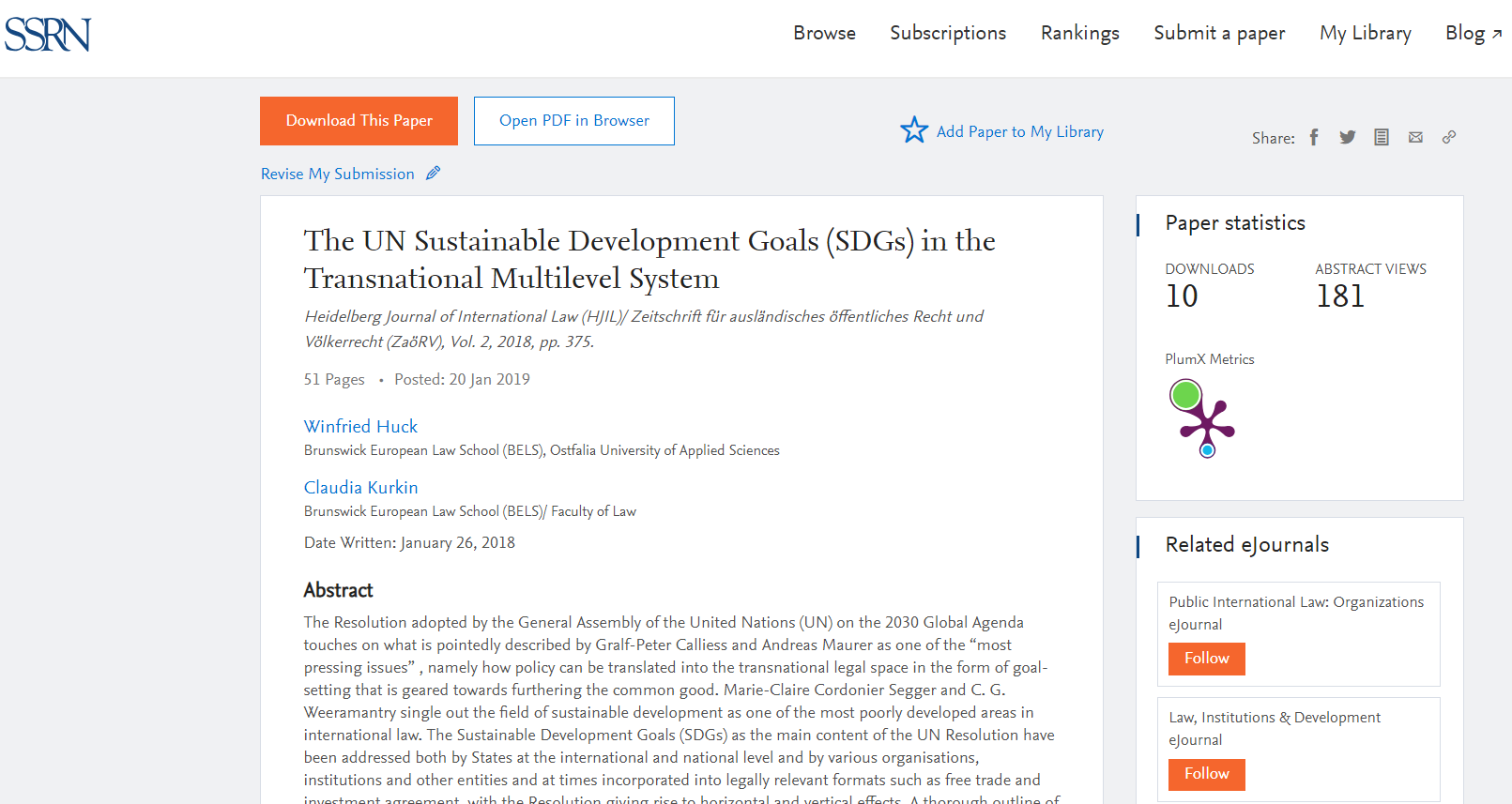
Abstract
The Resolution adopted by the General Assembly of the United Nations (UN) on the 2030 Global Agenda touches on what is pointedly described by Gralf-Peter Calliess and Andreas Maurer as one of the “most pressing issues” , namely how policy can be translated into the transnational legal space in the form of goal-setting that is geared towards furthering the common good. Marie-Claire Cordonier Segger and C. G. Weeramantry single out the field of sustainable development as one of the most poorly developed areas in international law.
The Sustainable Development Goals (SDGs) as the main content of the UN Resolution have been addressed both by States at the international and national level and by various organisations, institutions and other entities and at times incorporated into legally relevant formats such as free trade and investment agreement, with the Resolution giving rise to horizontal and vertical effects. A thorough outline of this development in the European legal system, notably in Germany and Italy, is provided here in order to clearly and adequately elucidate the vertical rootedness of the sustainable development concept within the overall system – a concept that has been in existence not just since the SDGs.
Inherent in the SDGs, moreover, is a new governance mechanism, the central element of which is the measurability of the SDGs with global indicators as a whole. Although a coordinated approach to indicators for measuring goal achievement is aspired to, the indicators remain heterogeneous at multiple levels, whether it be from a quantitative point of view, due to the absence of a consensus on methodology or else due to the lack of data to assist in specifying a fixed set of indicators as measuring points. This article consequently analyses the measures that have been taken to implement the indicators as well as the associated sticking points in addition to shedding light on the extent to which the SDGs have strengthened the administrative and management practices of international cooperation by means of standardised objectives and indicators. In light of the foregoing, this article provides an up-to-date and critical review not only of the legal effects of the SDGs but also of efforts currently undertaken to facilitate goal and target measurability using indicators at the interface of law and governance.
Huck, Winfried and Kurkin, Claudia, The UN Sustainable Development Goals (SDGs) in the Transnational Multilevel System (January 26, 2018). Heidelberg Journal of International Law (HJIL)/ Zeitschrift für ausländisches öffentliches Recht und Völkerrecht (ZaöRV), Vol. 2, 2018, pp. 375.
Available at SSRN: https://ssrn.com/abstract=3273899